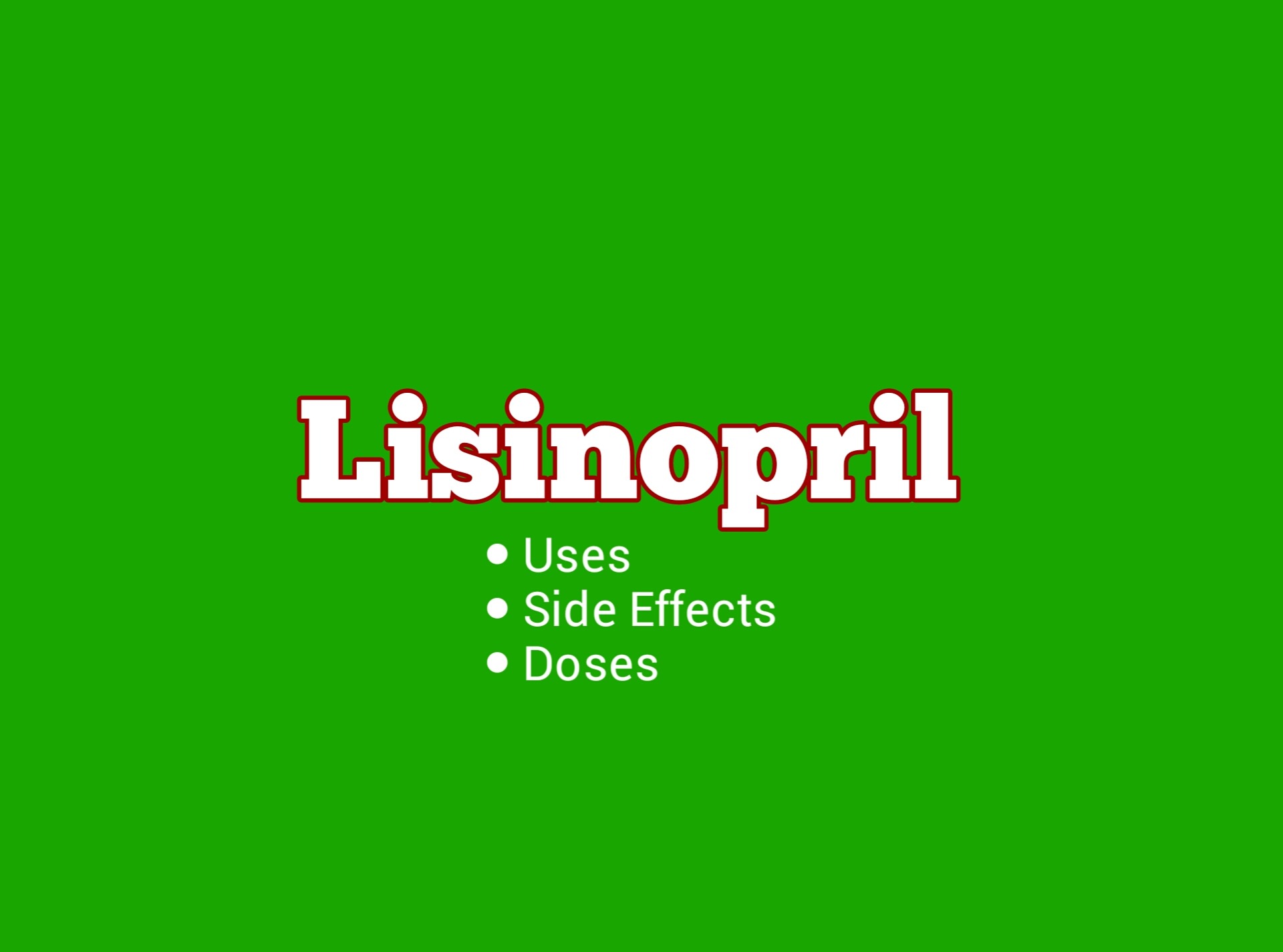Lisinopril belongs to a group of drugs called ACE (Angiotensin Converting Enzyme inhibitors). These cause the blood vessels to relax, making it easier for the blood to pass through them.
Uses
Lisinopril tablets are used to treat:
- High blood pressure.
- Diabetic kidney disease in patients with high blood pressure
- Heart failure.
- Patients who are stable but have had a heart attack within the last 24 hours (short term treatment).
- Lisinopril is recommended in children (above 6 years old) only for the treatment of high blood pressure (hypertension).
- Lisinopril should not be used in children with severe kidney impairment.
Lisinopril Side effects
The most common side effects that occur with lisinopril include:
- headache
- dizziness
- persistent cough
- low blood pressure
- chest pain
If these effects are mild, they may go away within a few days or a couple of weeks. If they’re more severe or don’t go away, talk to your doctor or pharmacist.
Serious Side effects include
- hypersensitivity (allergic) reaction.
- trouble swallowing
- stomach (abdomen) pain with or without nausea or vomiting
- kidney problems.
- tiredness
- swelling, especially of your hands, feet, or ankles
- shortness of breath
- weight gain
- liver failure.
- stomach pain
- nausea and vomiting
- high potassium levels.
Lisinopril Doses
Usual Adult Dose for Hypertension:
- Initial dose: 10 mg orally once a day; 5 mg orally once a day
- Maintenance dose: 20 to 40 mg orally once a day
- Maximum dose: 80 mg orally once a day
Usual Adult Dose for Congestive Heart Failure:
- Initial dose: 2.5 to 5 mg orally once a day
- Maintenance dose: Dosage should be increased as tolerated
- Maximum dose: 40 mg orally once a day
Usual Adult Dose for Myocardial Infarction:
- The initial dose is 5 mg orally (within 24 hours of the onset of acute myocardial infarction)
- Subsequent doses are 5 mg orally after 24 hours, then 10 mg orally after 48 hours.
- The maintenance dose is 10 mg orally once a day. Dosing should continue for at least 6 weeks.
Usual Adult Dose for Diabetic Nephropathy:
- Initial dose: 10 to 20 mg orally once a day
- Maintenance dose: 20 to 40 mg orally once a day
- Dosage may be titrated upward every 3 days
Usual Pediatric Dose for Hypertension:
- Pediatric patients greater than or equal to 6 years of age:
- Initial dose: 0.07 mg/kg orally once a day (Maximum initial dose is 5 mg once a day)
- Maintenance dose: Dosage should be adjusted according to blood pressure response at 1 to 2-week intervals.
- Maximum dose: Doses above 0.61 mg/kg or greater than 40 mg have not been studied in pediatric patients

